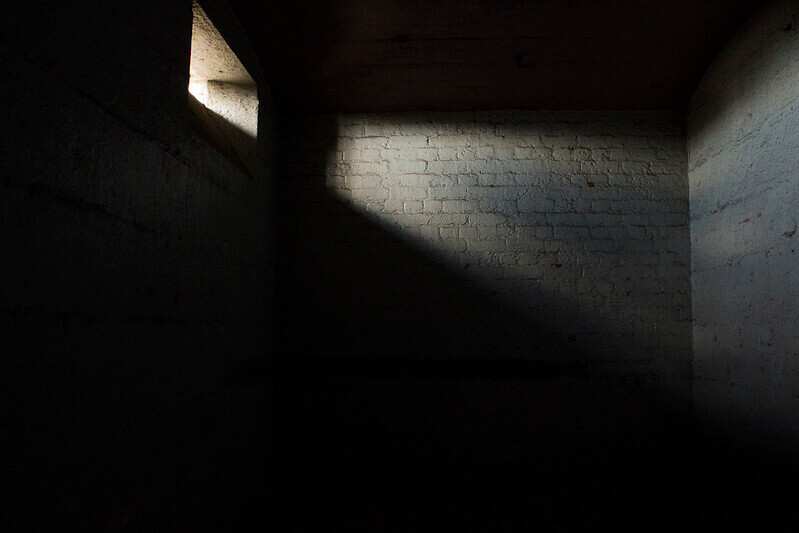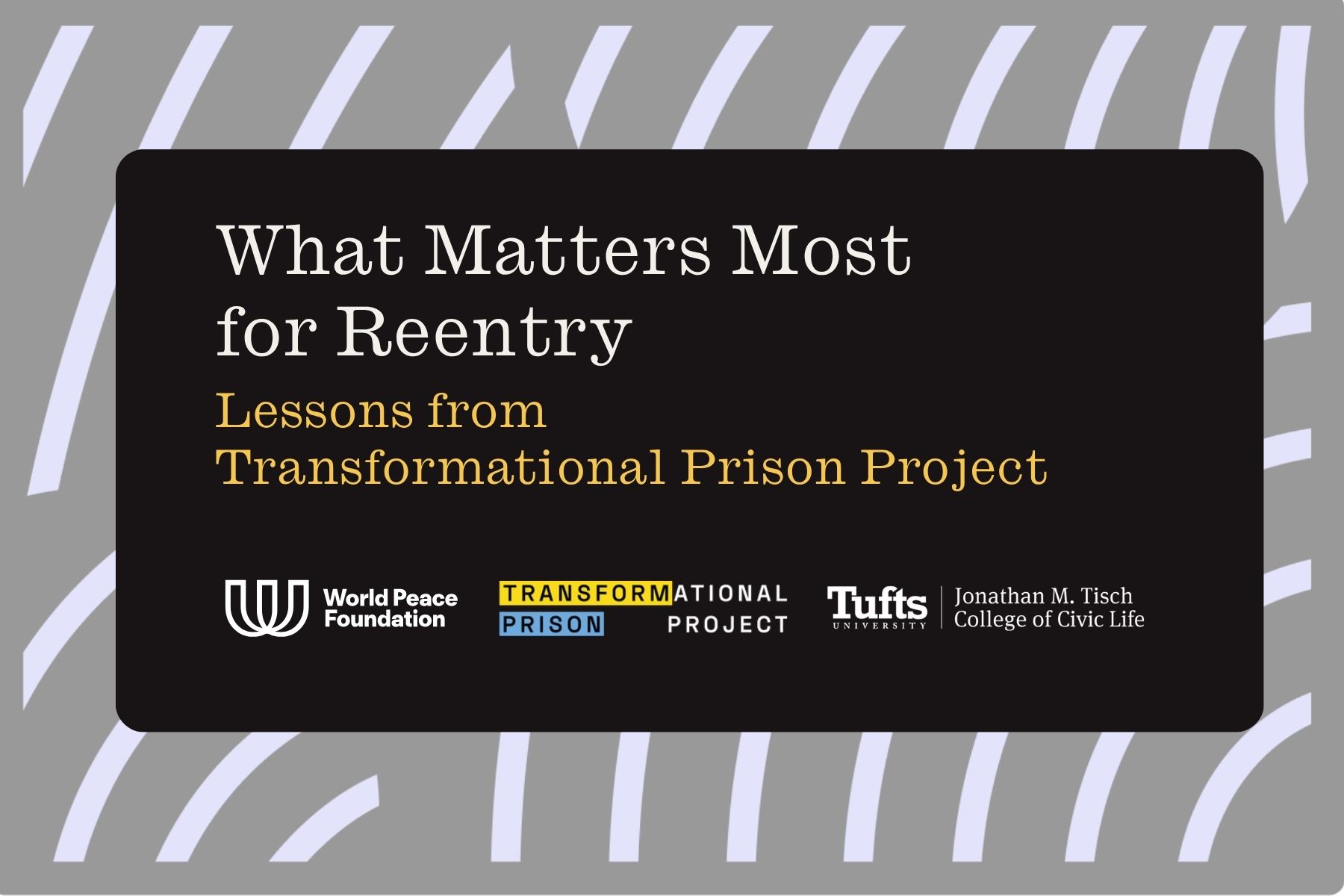Prison reform efforts in Massachusetts have revealed a tale of two prisons. There is the rhetorical prison that exists in Department of Correction’s (DOC) pronouncements and in the language of the 2018 Criminal Justice Reform Act (CJRA). CJRA was once heralded as the “blueprint” for criminal justice reform in the United States for the way that it created alternative to incarceration for juveniles, repealed several categories of mandatory minimums, introduced medical parole and reformed the use of restrictive housing, among other changes. These reforms did help the state to realize some important changes, but there is more work to do. Not only were some important areas untouched by the 2018 CJRA, but there are gaps in implementing it.
The gaps in implementing reform and the areas where new policy is needed should become evident in relation to prison as it actually exists. This version is one that is best understood by those who are living or have lived it: incarcerated and formerly incarcerated people. As example, a coalition of organizations led by incarcerated people, including the Lifers Groups, Inc., the Norfolk Inmate Council, African American Coalition Committee, plus community members at Old Colony Correctional Center, MCI-Concord and Souza Baranowski Correctional Center (SBCC), recently released a report, Creating Meaningful Public Safety: A Briefing on the MA DOC (January 5, 2023) directed at Massachusetts’ new Governor, Maura Healey, asking for a series of reform measures. They write to advocate for safe prison spaces where people have a real chance at rehabilitation. Instead, they argue:
“…officials simply sought to cast the limited legislative reforms made to the DOC over the past several years as a scapegoat, while using strongarm tactics to impose a false appearance of safety.”
Creating Meaningful Public Safety: A Briefing on the MA DOC , p. 4
Over two days of hearings on December 20 and 21st, 2022, held by the Massachusetts’ Joint Committee on the Judiciary, state legislators also began to probe the gap between laws they put on the books and the DOC’s implementation record.
One area of particular concern for people with lived knowledge, advocates and legislators is how the DOC manages restrictive housing – which is solitary isolation by another name. The 2018 CJRA established new rights for people who are placed in restrictive housing, defined as being held in cell for 22 or more hours a day. The legislation came into effect in 2019 – and then over the next two year, five significant things happened related to severe restrictions on incarcerated people’s living conditions (several of which are addressed in a WPF report published in 2021).
First, the DOC created new categories of solitary that fell just under the limits imposed by the CRJA, thereby circumventing the spirit of the law and evading the protections created by the legislation. As testimony from Prisoners Legal Services’ executive director, Lizz Matos testified, that the DOC’s creation of forms of housing that lock people inside their cells for 22 or 21 or 21.5 hours a day — just under the limit that defines “restrictive housing” in Massachusetts’ law that should trigger protections –violates the spirit of the law. She stated: “reducing that time period by 50 minutes, 30 minutes, certainly does not do anything to reduce the impact of solitary confinement on people psychologically or physically. I think it’s clear it’s in violation of the spirit of the Criminal Justice Reform Act” (hearing video, at 46:10).
Second, the DOC has failed to implement reforms to restrictive housing required by the 2018 CJRA. On July 22, 2022, a class action lawsuit was filed on behalf of three lead clients and incarcerated people by a legal team from the Boston College Civil Rights Law Clinic, together with a private firm, Holland & Knight. The lawsuit documents how the DOC has failed to follow the law regarding restrictive housing as set forth in the CJRA, by exceeding the maximum duration allowed for punitive purposes; refusing to release people into the general population when guidelines suggest they should be; refusing to allow people in solitary to to participate in review of their status; otherwise abusing or ignoring tenets of the placement review process; denying people in restrictive housing access to canteen; obstructing visitation with loved ones and communication with attorneys (pp. 2 – 5).
Third, since January 2020, following violence at SBCC that injured several guards, the prison’s entire north side was transformed into essentially a supermax prison. Severe deprivations are the norm, including significant delays in access to their legal paperwork and time to consult with their lawyers, extremely limited access to educational and other programming opportunities, regularly confining people to their cells for 21 or 21.5 hours/day, and, as documented in a lawsuit against the DOC brought by Prisoners Legal Services, “systemic, extreme and unconstitutional violence against more than a hundred prisoners” in early 2020.
Fourth, the Department of Justice (DOJ) released a report on November 17, 2020, about their investigation into the abuse of the Constitutional rights of people on “mental health watch” in Massachusetts’ prisons. The DOJ and DOC reached a settlement which was publicly released on December 20, 2022. The settlement set deadlines for the DOC to implement new policies and procedures designed to change the treatment meted out to incarcerated people experiencing a mental health crisis. It also mandated staffing adjustments, including increasing the number of mental professionals, changing training protocols, and setting out other guidance for how people with mental health crises are treated. It is an extensive and detailed document that addresses multiple components of the DOC response to crises.
But there is no accountability for officers who brutalized people on mental health watch, taunting them to harm themselves. As the DOJ’s 2020 report documented. Multiple incarcerated people told the DOJ investigators, that “correctional officers verbally taunt them and encourage them to self-harm” (11).
DOJ also reported that people on mental health watch received “unnecessarily harsh” treatment, including transportation to out of cell activities in leg shackles and handcuffs, and forcing them to wear security smocks [heavy clothing designed to prevent self-harm] past the time when it was clinically necessary” …and that such treatment made people feel “inhuman” (17).
Finally, the pandemic. While pandemic lockdowns never meant that all people in the prison system were in conditions of solitary, it imposed significant, extended and recurrent restrictions on people’s conditions of confinement. Many people were confined to a floor or tier where their cell was located, where they interacted with others living on the same area (ex: around ten people to a tier in MCI-Norfolk). Pandemic lockdowns meant extremely limited if any access to time out of cell including outdoors (fresh air); educational, behavioral and occupational programming; exercise; work; and, importantly, in-person visitation with loved ones. For many people, these conditions endured from late March or April 2020, with a reprieve in Summer 2020, then again continuously Fall 2020 to Spring 2021. Additional lockdowns have been imposed on prisons since then as well. For example, MCI-Framingham, the state’s only women’s prison, was on lockdown as recently as Jan. 5, 2022.
On January 8, 2023, the Boston Globe weighed in on the larger set of issues relate to closing the gap between the rhetorical and actual prison conditions in Massachusetts. The paper published an editorial decrying the need for change within the state’s prison system and urging the state’s new Governor, Maura Healey, to take action. The editors argued that DOC officials have “largely ignored the landmark 2018 Criminal Justice Act on such issues as solitary confinement, medical parole, educational programming, and the continued use of chemical restraints on mentally ill inmates at Bridgewater State Hospital.” They urged Governor Healey to tackle these with urgency.
One thing left out in the editorial is the need to centralize the expertise of incarcerated people and formerly incarcerated people, who understand the gap between the letter and reality of prison better than anyone else. As noted in the report mentioned above, “Creating Meaningful Public Safety,” incarcerated people have valuable insight and want a prison environment that is conducive to safety and rehabilitation. The authors – all incarcerated – wrote:
“Contrary to stereotypes, incarcerated people do not want to live in chaotic spaces punctuated by violence and drugs. Most desire stability organized under a positive treatment philosophy governed by clear, equitable, and humane rules where they can access effective resources to address the personalized factors that led to their incarceration. This goal can only be accomplished in spaces that are safe and rehabilitative. “
Creating Meaningful Public Safety: A Briefing on the MA DOC , p. 4
Similarly, a group of formerly incarcerated social justice activists joined with others to write recommendations for what is needed to improve conditions in prison in April 2022 (published
on this blog last week):
“The trauma of engagement with the justice system is hard to understand unless you have experienced it. Recovering from it is a lifelong process. We aim to make it better for people coming behind us.”
Policy & Program Recommendations of the Massachusetts ad hoc Council of Returned Citizens, p. 4
Massachusetts can boast of a vibrant community of formerly incarcerated people who have dedicated their lives to improving the chances of other systems-affected people to build healthy and thriving lives outside the system. Several have been interviewed on this blog, and we hope to continue to add more voices in the near future. Innovation will always come from those who have the most at stake: criminal justice reform is no different. Real change begins by making a commitment to harm reduction within prisons and aims towards viable pathways out so people can lead healthy, vibrant and productive lives.



